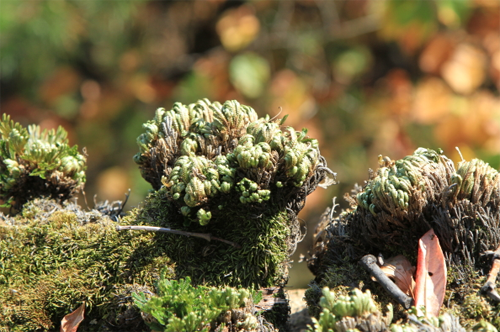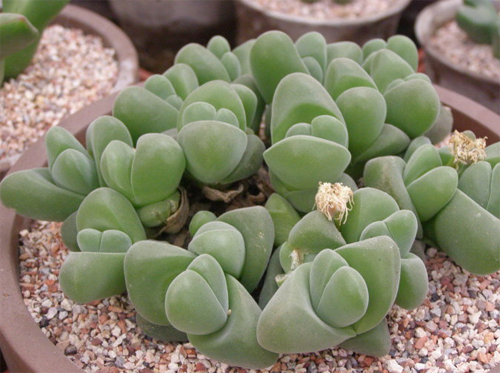The difference between the planting method of albizzia and mimosa
Albizzia flower, many people like to raise it very much, it can not only be used to watch, but also can be used to treat insomnia, how to plant it? When I was a child, how did the seedling look like the mimosa and how to distinguish it?

Planting method of albizzia julibrissin
The red flower is more resistant to cold and drought, and can adapt to all kinds of environments, because it has more varieties, and some flowers are slightly different, but they are all the same! They are usually propagated with seeds and can be sown by themselves!
You can also collect your own seeds and go home when the pods are ripe. The seeds can be sowed in spring and autumn. Before sowing, the seeds can be soaked in 35 ℃ warm water for 24 hours, sowed in shallow pots and sown in holes, covering soil 1 and 2 cm. Water can be fed by soaking basin method to keep it moist.
Under the condition of 15 Mel 20 ℃, the seedlings emerged in 10 days after 7 Mel, and the seedlings were put on the pot when the height was 5 cm.
The strong mother plant was selected when the seed was collected, and the management was strengthened. In the fruiting period, the pods were picked along with ripening, and the pods would crack automatically when they were ripe. There are no special requirements for maintenance and management.
General soil can be cultivated, the growth period does not need much fertilizer, dilute liquid fertilizer 2murmur3 times can be applied, fertilizer should not be too much, leaf green can grow healthily, do not make it grow.
The planting technology of albizzia is simple, rough cultivation is fine, and there is no need to manage it at all. It is not strict with climate, sunshine and soil, but it is better with fertile and loose sandy loam and likes a warm and humid environment.
The difference between albizzia and mimosa:
Sometimes there are small seedlings all over the ground in Liangguang or some places in Hainan. They look like mimosa, but in fact they are the seedlings of Leucaena leucocephala.
The mimosa closes with the touch of the hand, and the seedlings of the acacia seem to be closed only under intense stimulation! Of course, it won't be closed after a few touches!
Leucaena leucocephala has a well-developed root system, is very drought-tolerant, and can survive without rain for months. Not resistant to waterlogging, poor growth of stagnant water for a long time.
Albizzia flower alias:
Night trees, velvet trees, etc., bloom during the day and close at night.
Albizia flower color:
White and red.
White albizzia, also known as Leucaena leucocephala, is native to tropical regions and prefers warm and humid climates. the optimum temperature for growth is 25 ℃ 30 ℃, 12 ℃ slow growth, less than 10 ℃, more than 35 ℃, stop growing, leaves below 0 ℃ fall off.
This is the end of the introduction about the planting method of acacia flowers and the method of mimosa, which color to plant, or according to their own preferences to choose, different people really like different colors.
Planting technique of Albizia julibrissin
Albizia is also known as velvet tree, night tree, Lantana, deciduous tree. It originated in the Yellow River Basin and other places in the south of China. Light red flowers bloom in summer, shaped like fluffy balls and striking fragrance. The leaves close at sunset and open at sunrise. Leaves shaped like mimosa leaves, slender like feathers, flowers and leaves are strange. Albizia trees are beautiful in shape, shady like umbrellas and clusters of safflower, which can be planted by the courtyard pool or shade trees and street trees. Albizia, a flower with a beautiful name and shape, take a look at its planting technology.
Albizzia usually blossoms from June to July. After flowering, the main axis of its inflorescence can continue to elongate upward, producing bracts and flower buds, like uniaxial branches, so it is also called uniaxial inflorescence, mostly red and pink, and occasionally white. The shape looks like a fan, fluffy, very similar to dandelion.
1. Propagation method: sowing and reproducing with seeds, sowing seeds in both spring and autumn, soaking seeds in warm water for 24 hours before sowing, sowing in shallow pots, covering soil 1-2 cm, feeding water by soaking method, keeping moist, emergence after 7-10 days under the condition of 15-20 ℃, pots when the seedlings are 5 cm high. The strong mother plant was selected when the seed was collected, and the management was strengthened. In the fruiting period, the pods were picked along with ripening, and the pods would crack automatically when they were ripe.
2. Water and fertilizer management: Albizzia is resistant to dryness and waterlogging. Do not water too much during maintenance, so as not to cause waterlogging and damage the root system. Albizzia can be extensive management, the demand for water and fertilizer is not very high, even in barren areas may grow very exuberant. But it should be noted that it does not like noise and dust, so it needs to keep a good pass on it when breeding.
3. Plastic pruning: only close planting of albizzia can ensure the straightness of the trunk, and the side branches should be pruned in time during the seedling period. It is found that some side branches should be erased from the roots of the branches as soon as possible, because the side branches are often not cut thoroughly with a knife, which leads to the re-germination of the side buds. The seedlings with inclined trunk can be cut off in the second year to promote sturdy growth and straighten the main rod. Transplanting young seedlings should be carried out before sprouting, and transplanting large seedlings should bring enough soil balls. When planting greening projects, it is necessary to lose the side branches and leaves, leaving only the trunk to ensure survival, and set up brackets to prevent wind-blown lodging.
4. disease and pest control: Albizzia is mainly harmful to canker disease. When the disease occurs, it can be sprayed with 2000-3000 times of bacteria, 1000 times of bacteria and 50 times of bacilli. Insect pests are harmful to longicorn beetles and planthoppers. Longicorn beetles are killed with 1 kg kerosene and 50 grams of dichlorvos EC, 1500-2000 times of 25% buprofezin and 1500 times of 40% dimethoate EC.
Albizia seeds can extract oil, bark and flowers can be used medicinally, it has the effects of calming the mind and relieving depression, promoting blood circulation and relieving pain, appetizer and qi. The extract is used externally for the treatment of fracture, gangrene, swelling and pain. Albizia has strong resistance to hydrogen chloride and nitrogen dioxide, and has certain resistance to sulfur dioxide and chlorine. The acacia tree is different between yin and yang, which is called sensitive plant and is listed as the preferred tree species for seismic observation.
What are the varieties of mimosa and the classification of mimosa varieties
Mimosa is a common family cultivated plant, and its vitality is tenacious, so it is planted as a weed in many countries. The leaves of mimosa are so sensitive that they droop and shrink as long as they touch a cup, and they seem to bow their heads shyly, so they are named mimosa. So, what are the varieties of mimosa? Today we are going to learn the classification of mimosa varieties.
What are the varieties of mimosa
Mimosa subfamily dicotyledonous plants, about 56 genera, 2800 species, from tropical, subtropical and temperate regions of the world. 17 genera and 63 species have been introduced into China, mainly in the south and southwest.
Because of the strong adaptability to the growth environment, there is basically no difference between varieties. However, it is generally divided into prickly mimosa and non-prickly mimosa in appearance.
There is a prickly mimosa: that is, some small white hairs grow from the neck of the mimosa, and there are small thorns and slightly hard branches and leaves.
No prickly mimosa: the stem is smooth, without villi, and there are no thorns at the branches and leaves.
Variety classification of mimosa
Mimosaceae: Mimosa (Coleophora), Mimosa (Peacock bean), Mimosa, Acacia, Monkey earrings (Ampelopsis), Acacia, Tripterygium, Paeonia (Artemisia), Chess, Phaseolus, Elephagus, Leucaena, Raintree, Zhu tassel (American Acacia), etc. Acacia, adzuki bean, acacia and Zhu tassella are the most common. The most common varieties are Zhu tassel, American mimosa, sea red bean and so on.
After understanding the variety classification of mimosa, let's get familiar with the growth habits of mimosa.
Mimosa is produced in Central and South America, and has spread to many parts of the world. Mimosa has strong adaptability, likes light rain, grows well in humid and fertile soil, does not have high requirements for soil, is not cold-resistant, likes light, but can tolerate semi-shade. Now do more ornamental plant culture in the family. Generally born in hillside jungles and roadside tidal wetlands.
- Prev

How to raise Selaginella officinalis or Selaginella officinalis
Can reviving grass from the dead turn the dead into living people? There is no such magical plant yet. It means that this kind of plant is very hardy. As long as it floats to the water, it can live. How to raise it? Is it Selaginella or cushion Selaginella? How to raise the grass for the dead: strong drought resistance
- Next

The culture method of algal bell jade and its flowering
The algal bell jade is very well-behaved, a bit like a stone flower, and there is a good-sounding name called Yinguangyu, which can blossom. What is the breeding method of algal bell jade? What are the precautions? What other nicknames do you have? What do the flowers look like?
Related
- Fuxing push coffee new agricultural production and marketing class: lack of small-scale processing plants
- Jujube rice field leisure farm deep ploughing Yilan for five years to create a space for organic food and play
- Nongyu Farm-A trial of organic papaya for brave women with advanced technology
- Four points for attention in the prevention and control of diseases and insect pests of edible fungi
- How to add nutrient solution to Edible Fungi
- Is there any good way to control edible fungus mites?
- Open Inoculation Technology of Edible Fungi
- Is there any clever way to use fertilizer for edible fungus in winter?
- What agents are used to kill the pathogens of edible fungi in the mushroom shed?
- Rapid drying of Edible Fungi

